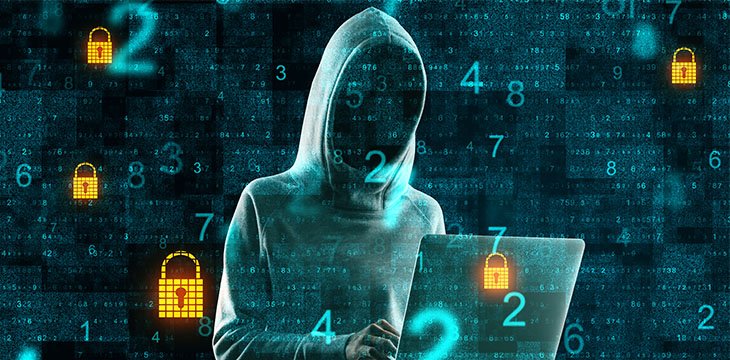Top 10 Security Measures to Protect Your Account from Online Scams and Hackers
In today’s digital age, protecting your online accounts from scams and hackers is crucial. With increasing cyber threats and sophisticated attack techniques, securing your accounts requires a proactive approach. Here’s a comprehensive guide on ten essential security measures you must take to safeguard your online presence.
### 1. Use Strong, Unique Passwords
Passwords are the first line of defense against unauthorized access. A strong password is complex and difficult to guess. Use a mix of upper and lower case letters, numbers, and special characters. Avoid common words, phrases, or easily guessable information such as birthdays or names.
To ensure uniqueness, do not reuse passwords across multiple sites. Each account should have its own distinct password. Password managers can help generate and store complex passwords securely, reducing the risk of password fatigue and reuse.
### 2. Enable Two-Factor Authentication (2FA)
Two-Factor Authentication (2FA) adds an extra layer of security by requiring not just a password but also a second form of verification. Typically, this involves receiving a code on your mobile device or using an authentication app, such as Google Authenticator or Authy.
2FA significantly reduces the risk of unauthorized access. Even if a hacker obtains your password, they would still need the second form of verification to access your account. Ensure that you enable 2FA on all accounts that offer it, particularly for sensitive accounts like email and banking.
### 3. Be Wary of Phishing Attempts
Phishing scams trick users into revealing personal information or login credentials by pretending to be legitimate entities. Phishing can occur through emails, text messages, or fake websites. Always scrutinize the source of any communication requesting sensitive information.
Look for signs of phishing, such as unusual sender addresses, misspelled URLs, or urgent language that pressures you to act quickly. Avoid clicking on links or downloading attachments from unknown or suspicious sources. If in doubt, contact the organization directly through official channels.
### 4. Keep Software and Systems Updated
Software updates often include patches for security vulnerabilities that hackers may exploit. Regularly update your operating system, web browsers, and any installed applications to protect against the latest threats. Enable automatic updates where possible to ensure you are always using the most secure versions.
This also applies to mobile apps and firmware for devices such as routers and security cameras. Keeping all software up to date reduces the risk of being targeted by attackers who exploit outdated software vulnerabilities.
### 5. Monitor Account Activity Regularly
Regularly reviewing your account activity helps identify any unauthorized transactions or changes. Set up alerts for any unusual activity, such as login attempts from unfamiliar locations or changes to account settings.
For financial accounts, check your statements frequently for any discrepancies. If you spot anything suspicious, report it immediately to the respective service provider. Monitoring your accounts proactively can help you catch potential issues early and mitigate damage.

### 6. Use Secure Wi-Fi Connections
Public Wi-Fi networks are often less secure and can be a target for hackers looking to intercept your data. Avoid accessing sensitive accounts or performing financial transactions over public Wi-Fi. If you must use public Wi-Fi, consider using a Virtual Private Network (VPN) to encrypt your internet connection and protect your data.
For your home network, ensure that your Wi-Fi is secured with a strong password and encryption protocol (e.g., WPA3). Regularly update your router’s firmware and consider changing the default network name (SSID) to something less identifiable.
### 7. Be Cautious with Social Media Sharing
Social media platforms are fertile ground for scammers and hackers looking to gather personal information. Avoid sharing sensitive details like your full address, phone number, or vacation plans publicly. Cybercriminals can use this information for identity theft or to target you with personalized scams.
Review and adjust your privacy settings on social media platforms to control who can see your posts and personal information. Regularly audit your connections and remove any that seem suspicious or no longer relevant.
### 8. Implement Device Security Measures
Securing the devices you use to access online accounts is crucial. Use a strong password, PIN, or biometric lock (e.g., fingerprint or facial recognition) to lock your devices. This adds an extra layer of protection in case your device is lost or stolen.
Install reputable security software, such as antivirus and anti-malware programs, to protect against malicious threats. Enable features like remote wipe or find my device, which allow you to locate, lock, or erase your device if it’s lost or stolen.
### 9. Be Mindful of Downloaded Files and Links
Malware and viruses can be disguised as seemingly harmless files or links. Avoid downloading files from unknown sources or clicking on links in unsolicited emails or messages. Always verify the source of any file or link before downloading or opening it.
If you need to download software or files, ensure you do so from reputable websites or official app stores. Many security programs also offer real-time protection and scanning for downloads, adding an extra layer of defense against malicious files.
### 10. Educate Yourself and Stay Informed
Cyber threats are constantly evolving, and staying informed about the latest security practices is essential. Educate yourself about common online scams, hacking techniques, and emerging threats. Regularly read updates from cybersecurity experts and stay aware of best practices for online safety.
Participating in online security webinars, following reputable cybersecurity blogs, and joining forums or groups focused on digital security can help you remain vigilant and adapt to new security challenges.
### Conclusion
Protecting your online accounts from scams and hackers requires a combination of vigilance, proactive measures, and good practices. By implementing these ten security measures—using strong and unique passwords, enabling two-factor authentication, being wary of phishing attempts, keeping software updated, monitoring account activity, using secure Wi-Fi connections, being cautious with social media, securing devices, being mindful of downloads, and staying informed—you can significantly reduce the risk of falling victim to cyberattacks. Remember, the effort you put into securing your online presence can save you from potential headaches and financial loss, ensuring a safer digital experience.
